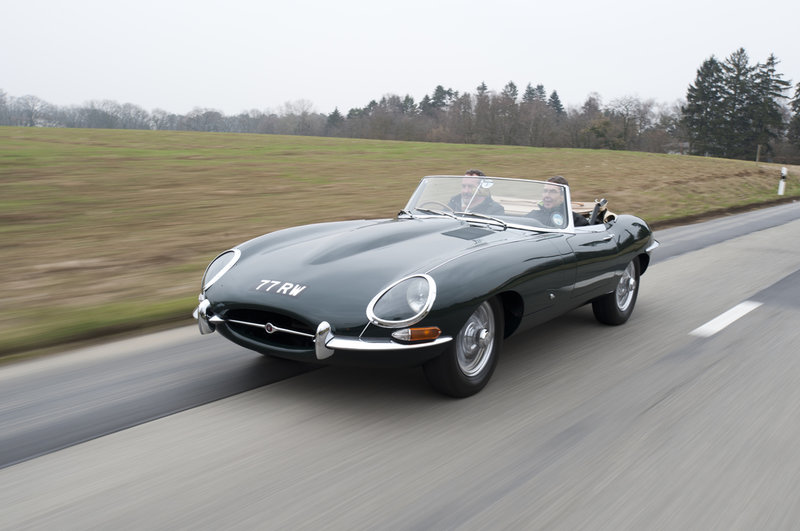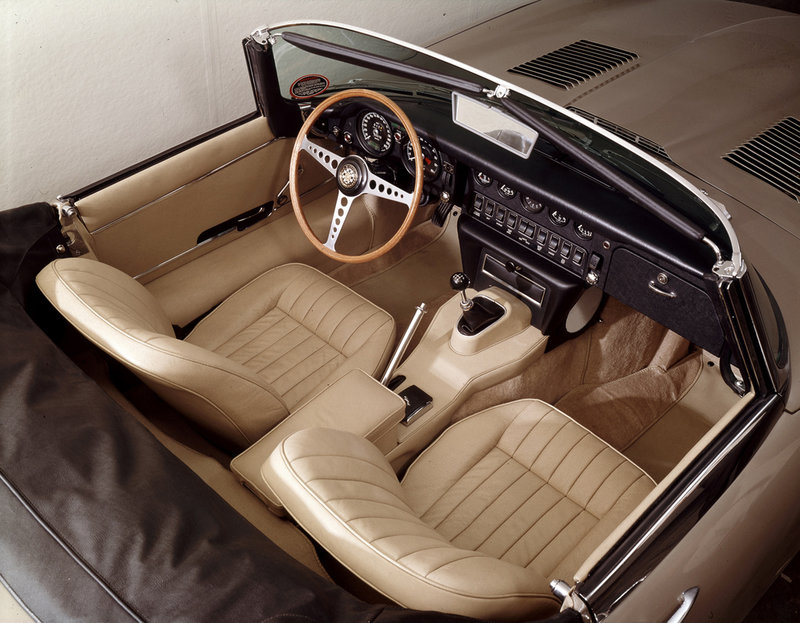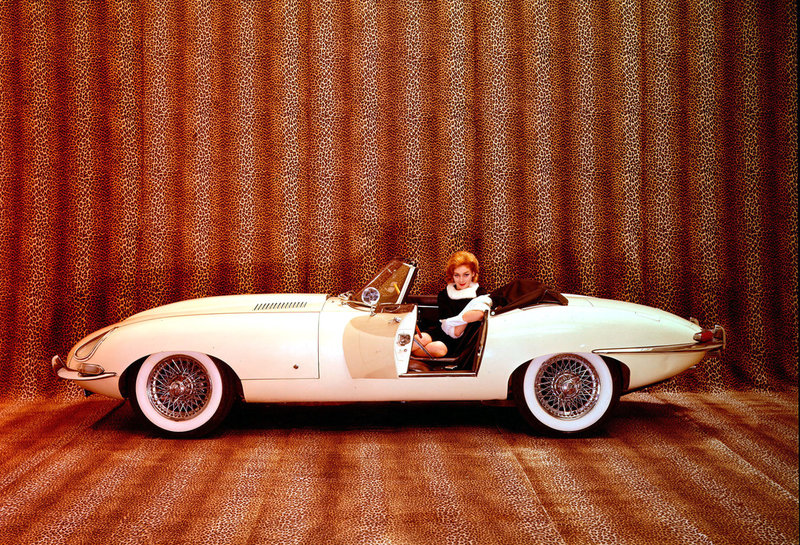The Jaguar E-Type was manufactured between 1961 and 1975, making the 1961 model the first year that this sports car was on the market. It was known for high performance, gorgeous styling, and competitive pricing. Overall, 72,233 E-Types were produced, and experts estimate that 6,626 are left today. As such, it is not that hard to find a 1961 E-Type to add to your collection, and you are likely to spot one at a classic car show.

Design and Aerodynamics
The E-Type first made its debut during the 1961 Geneva Salon, and it stunned the crowds. The design was the work of William Lyons and aerodynamicist Malcolm Sayer. It took inspiration from the D-Type in many ways but used plenty of steel.
The hood of the E-Type was one piece with a forward hinge and the center was incredibly strong. There were also sub-frames in both the rear and front. The E-Type’s headlights were cowled, and the taillights were stripped across the auto’s rear bumpers. The dual pipes were in the center rear and throaty, but the noise did not affect the interior much.

At first, the E-Type was offered as either a roadster, which is the version Sayer styled, or the fixed head coupe with a rear hatchback that opened. The latter of these had some design input from both Bob Blake and Lyons. An interesting bit of trivia is that out of all the autos produced by Jaguar while Lyons was actively involved in running the company, this is the only one that he did not completely style himself.
Mechanics
The 1961 E-Type had impressive performance with its 3.8-liter DOHC engine that generated 265 brake horsepower. This engine’s cast iron cylinder block was made in Lancashire by Leyland Motors, which the company had actually been doing since 1948. Thanks to the engine, the auto was able to reach 60 mph from a standstill in 6.5 seconds or 100 mph in just 16.2 seconds. Its top speed was just below 150 mph. Other mechanical components worth mentioning included disc brakes and an independent suspension designed by Bob Knight. The team behind this Jaguar used rubber carefully to suppress vibration as well as noise.
Interior

Inside the first Jaguar E-Type, the dashboard was filled with gauges and had a row for toggle switches. The leather seats were luxurious and in a bucket style. The instrument panel was trimmed in aluminum, as was the console.
What to Know if You Buy One

If you are interested in adding a 1961 Jaguar E-Type to your automotive collection, you should know that the suspension is incredibly genius when fully functional, but it requires a particularly thorough inspection and regular tuning. Those who get the chance to drive the first E-Type should know that the self-adjusting handbrake requires some getting used to, as the mechanism seizes frequently if it is not lubricated enough. In terms of the engine, it is exceptionally reliable provided it has been well-maintained. It can easily go at least 150,000 miles without a rebuild.
